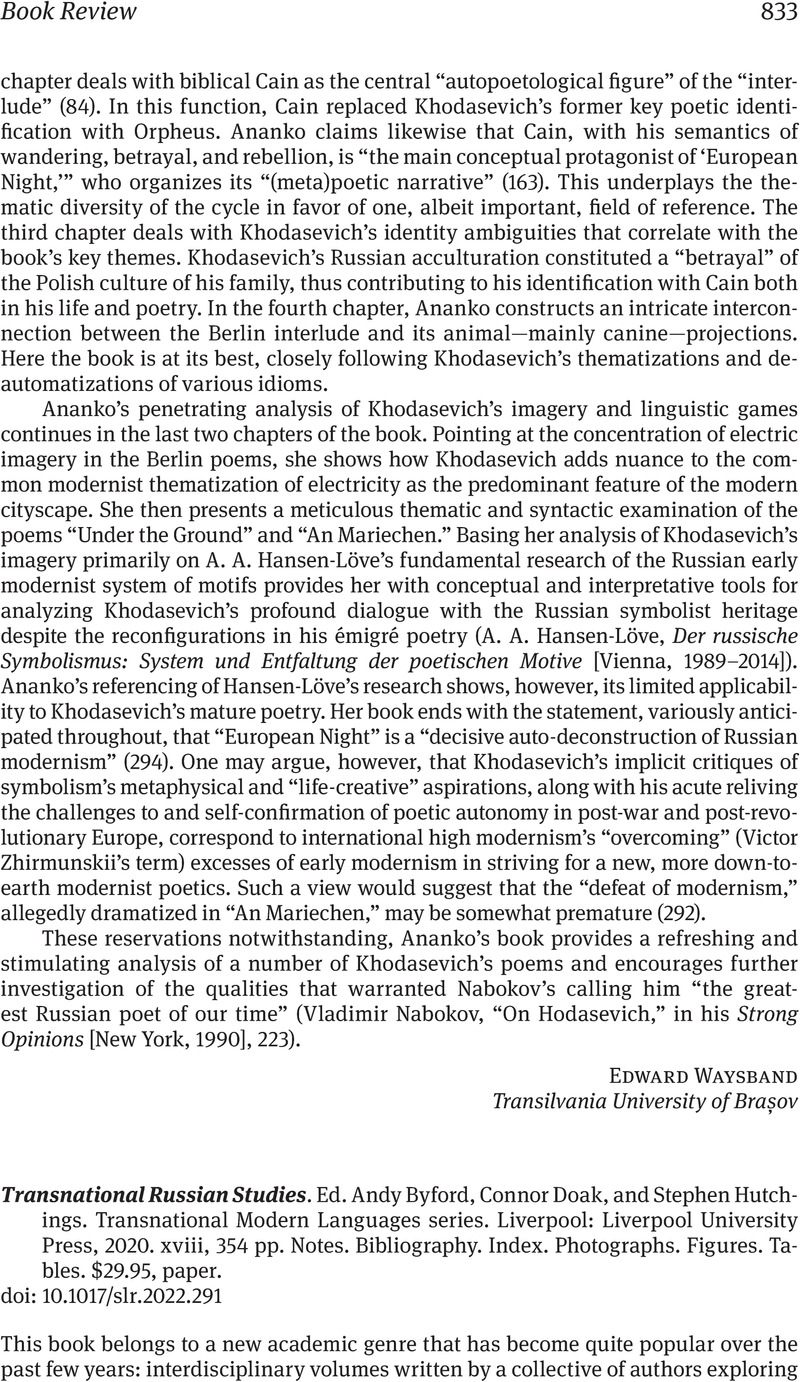No CrossRef data available.
Article contents
Transnational Russian Studies. Ed. Andy Byford, Connor Doak, and Stephen Hutchings. Transnational Modern Languages series. Liverpool: Liverpool University Press, 2020. xviii, 354 pp. Notes. Bibliography. Index. Photographs. Figures. Tables. $29.95, paper.
Review products
Transnational Russian Studies. Ed. Andy Byford, Connor Doak, and Stephen Hutchings. Transnational Modern Languages series. Liverpool: Liverpool University Press, 2020. xviii, 354 pp. Notes. Bibliography. Index. Photographs. Figures. Tables. $29.95, paper.
Published online by Cambridge University Press: 07 February 2023
Abstract
An abstract is not available for this content so a preview has been provided. Please use the Get access link above for information on how to access this content.

- Type
- Book Review
- Information
- Copyright
- Copyright © The Author(s), 2023. Published by Cambridge University Press on behalf of the Association for Slavic, East European, and Eurasian Studies


